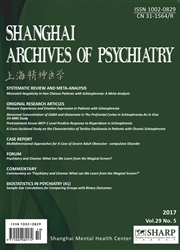

 中文摘要:
中文摘要:
β-淀粉样蛋白(amyloid-β,Aβ)沉积形成的老年斑和高度磷酸化Tau蛋白导致的神经原纤维缠结是阿尔茨海默(Alzheimer’s disease,AD)的病理特征,目前胆碱酯酶抑制剂和NMDA受体拮抗剂是治疗AD的主流药物,都定向作用于Aβ或者Tau蛋白。过去20年,许多基于阿尔茨海默病病理假说的新药都处于临床试验阶段。那些Aβ单克隆抗体和γ分泌酶抑制剂等新药定向作用于Aβ的病理通路。那些可抑制神经原纤维缠结和生成抗Tau蛋白抗体的新药则定向作用于Tau蛋白的病理通路。但至今尚没有根本性突破性的好消息。中国目前的研究似乎让人看到一丝曙光,一些具有完全自主知识产权的治疗AD新药正处在Ⅱ期或Ⅲ期临床试验中。
 英文摘要:
英文摘要:
Cholinesterase inhibitors and N-methyl-D-aspartic receptor antagonists are currently the main treatments for Alzheimer's disease (AD), targeting the clinical symptoms of AD. β-amyloid (Aβ) deposition and the highly-phosphorylated Tau protein-induced neurofibrillary tangles are some of the common pathological features of AD. In the past 20 years, many new drugs that focus on the pathogenesis of Alzheimer's disease have been assessed in clinical trials. Drugs such as β-amyloid monoclonal antibody and gamma-secretase inhibitor target the Aβ pathological pathway. New drugs targeting the Tau pathological pathway inhibit the generation of neurofibrillary tangles and the Tau protein antibodies. But until now, none of these drugs has brought a fundamental breakthrough. This initial breakthrough may come out of China as there are several groups here which already have disease-modifying drugs in phase Ⅱ and phase Ⅲ of clinical trials.
 同期刊论文项目
同期刊论文项目
 同项目期刊论文
同项目期刊论文
 Effects of Memantine on Clinical Ratings, Fluorodeoxyglucose Positron Emission TomographyMeasurement
Effects of Memantine on Clinical Ratings, Fluorodeoxyglucose Positron Emission TomographyMeasurement Multi-Level Deficiency of White Matter Connectivity Networks in Alzheimer’s Disease: A Diffusion MRI
Multi-Level Deficiency of White Matter Connectivity Networks in Alzheimer’s Disease: A Diffusion MRI 期刊信息
期刊信息
